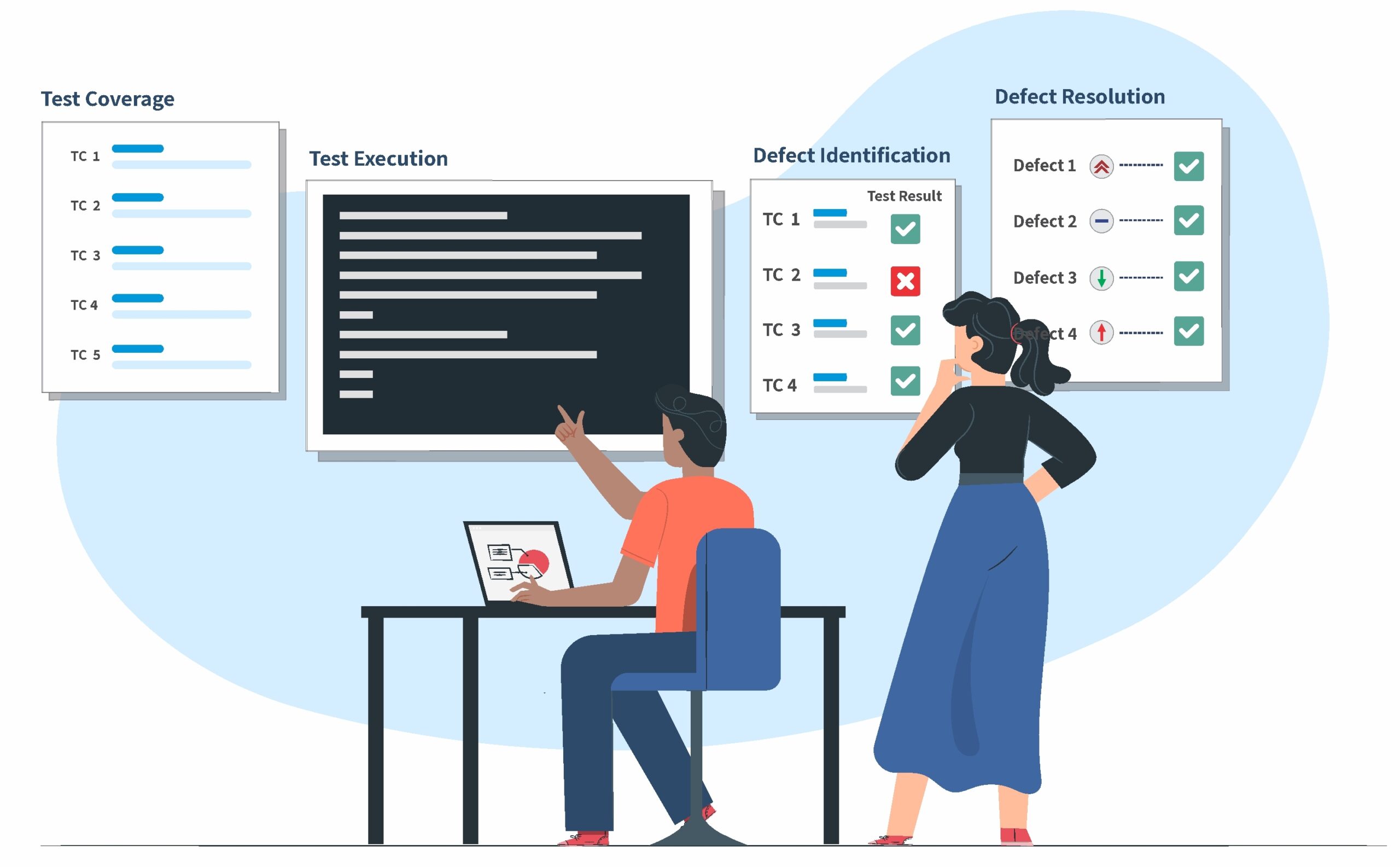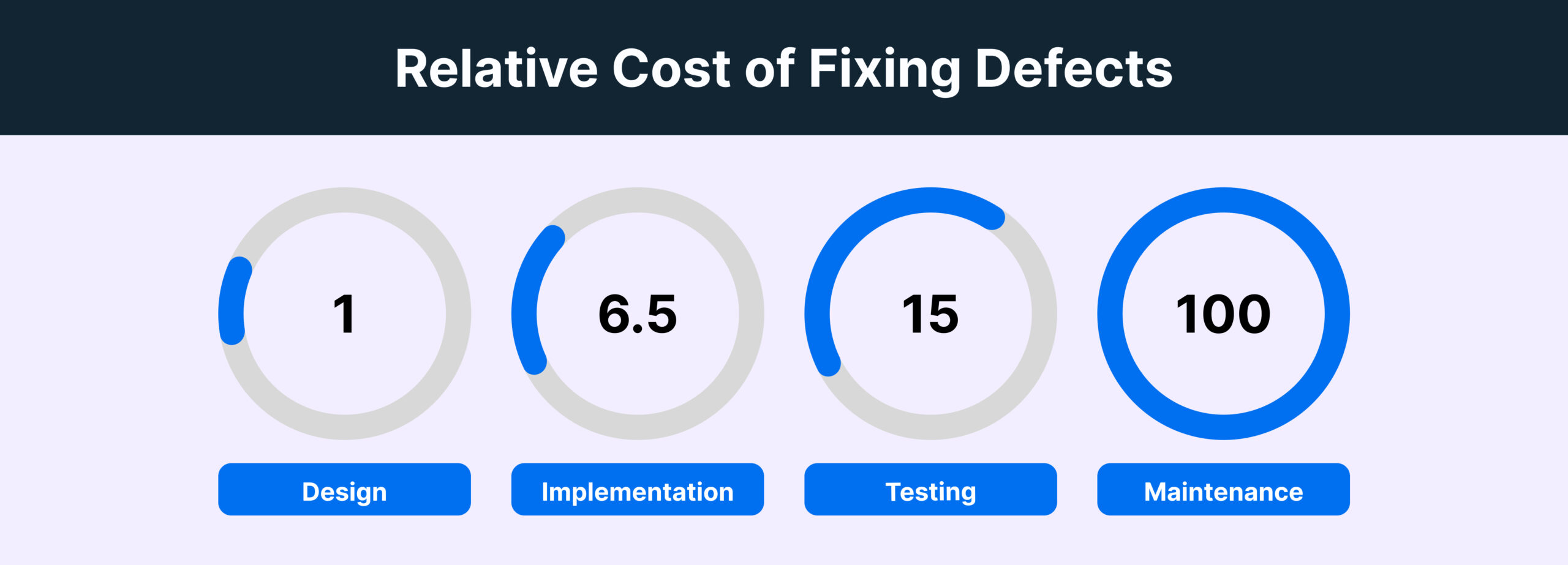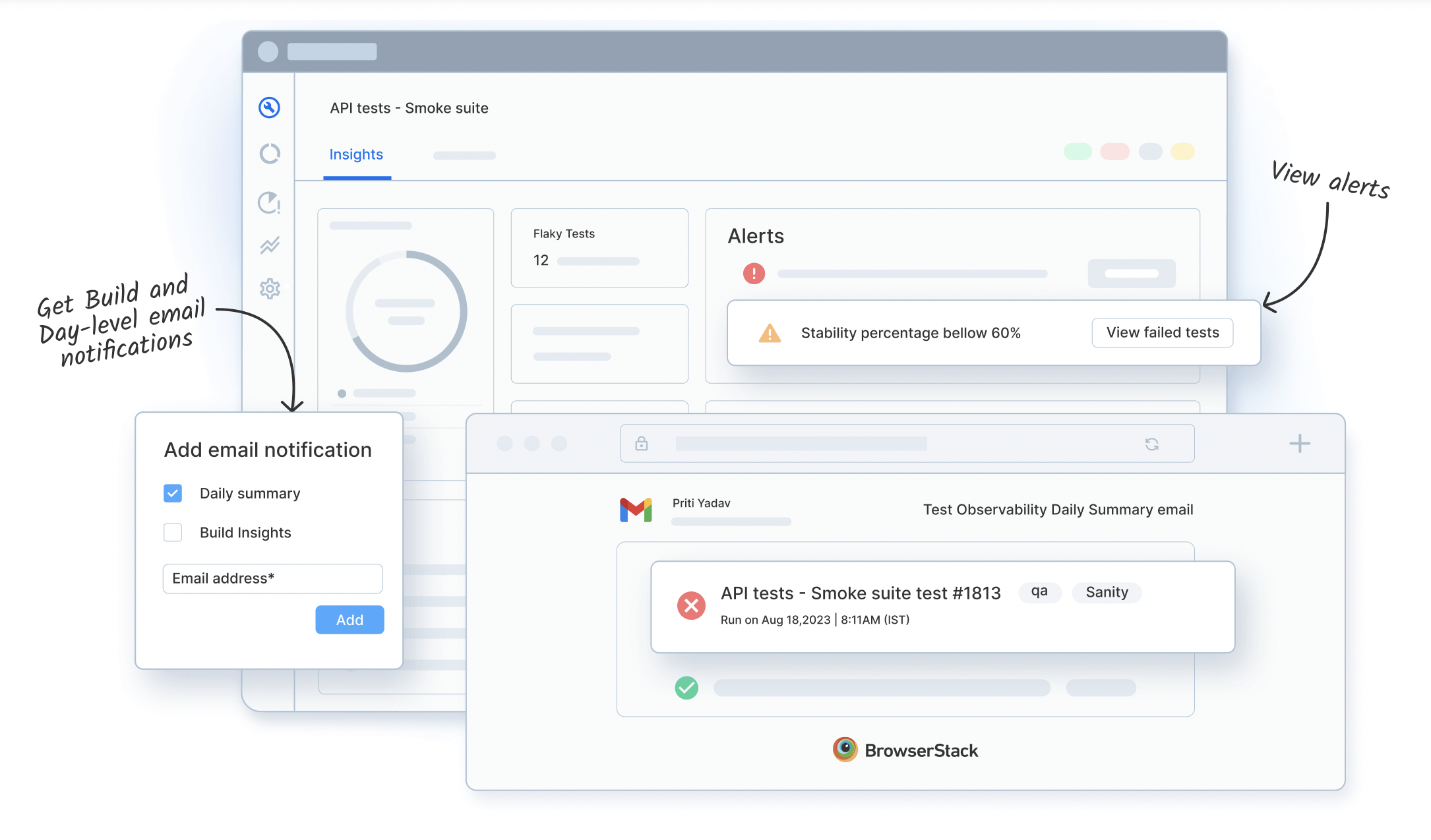What is Test Monitoring and Test Control?
What is Test Monitoring?
Test Monitoring is a software testing stage, that involves continuous supervision and assessment of testing activities to verify their efficiency and alignment with project goals. This phase involves:
- Vigilant observation of Test Execution Progress,
- Test Coverage
- Defect identification, and
- Defect resolution.
It encompasses the tracking of critical metrics, their comparison against predefined criteria, and the making of informed decisions based on the collected data. Test monitoring yields valuable insights into the software’s quality under examination, aids in the detection of potential risks, and enables timely adjustments to testing strategies or resource allocations.
Test Monitoring is a continuous procedure that ensures:
- Testing endeavors stay on course,
- Issues are promptly dealt with, and
- Project stakeholders are well-informed about the testing status.
What is Test Control?
Test control involves managing and regulating the software testing process to ensure its effectiveness and alignment with project objectives. It involves:
- Establishing guidelines and processes that provide a structured framework for testing.
- Setting standards that dictate the testing process and help ensure consistency and adherence to best practices.
- Deciding resource distribution, encompassing personnel, tools, and environments, to facilitate and bolster testing activities.
- Observing testing activities progress, which encompasses test execution, coverage, identification, and resolution of defects.
- Monitoring key metrics to assess the efficiency of testing endeavors and juxtaposing them with predefined criteria.
- Enhancing testing process to guarantee efficiency and effectiveness in the delivery of a top-notch product.
Why is Test Monitoring important?
By using Test monitoring, organizations can:
- significantly improve software quality,
- accelerate time to market, and
- gain a competitive edge.
Did you know Test monitoring can automate manual tasks associated with test execution and analysis, freeing up 30% to 50% of a tester’s time.
Fixing bugs early in the SDLC is 10 to 100 times cheaper than fixing them after release. You can save up to 85% of the costs by detecting and fixing defects early on.
Test monitoring benefits include:
- Elevated Software Quality: Test monitoring, by offering immediate visibility into test execution, empowers teams to detect and address defects early in the SDLC, resulting in software releases of superior quality.
- Quicker Time to Market: Persistent monitoring facilitates swift identification and resolution of issues, thereby diminishing development cycles and hastening the time to market.
- Improved Effectiveness: Test monitoring automates manual tasks related to test execution and analysis, liberating valuable time for testers to concentrate on more advanced activities.
- Enhanced Decision-Making: Insights derived from test monitoring, grounded in data, enable teams to make well-informed decisions regarding resource allocation, test strategy, and release planning.
Who needs to do Test Monitoring and Control?
Test monitoring and control touches the following personas in the process:
- Developers benefit by getting access to faster feedback on code quality and performance issues. It fosters improved collaboration with testers through shared data insights and enables proactive identification of integration and regression issues.
- QAs use test monitoring for increased efficiency, providing deeper insights into test execution and performance. It enables proactive problem identification along with faster defect resolution.
- Product Managers benefit from data-driven insights that contribute to better decision-making for the product roadmap. It results in higher customer satisfaction, faster time to market and increased release predictability.
- DevOps Engineers see that enhanced test monitoring and stability of test environments streamline release processes and reduce deployment risks. It contributes to scalability and cost-efficiency through the optimization of the test infrastructure.
Test Monitoring Metrics
Test monitoring provides a wealth of data through various metrics, offering valuable insights into the health and performance of your software under test. Some metrics are:
- Test Execution metrics
- Resource Utilization metrics
- Performance metrics
- Advanced metrics
Test Execution Metrics
Test execution metrics are quantitative measures used to assess and analyze various aspects of the testing process during the actual execution of test cases, providing insights into the progress, efficiency, and quality of the testing efforts.
Test Execution Metrics include:
- Pass/Fail Ratio
- Test Execution Time
- Defect Detection Rate
- Test Case Coverage
Resource Utilization Metrics
Resource utilization metrics refer to quantitative measures that assess the efficiency and effectiveness of resources, such as personnel, tools, and infrastructure, in the context of a project or process, helping to optimize resource allocation and utilization.
Resource Utilization Metrics include:
- CPU/Memory usage
- Network traffic
- Database load.
Performance Metrics
Performance metrics in the context of software or system performance typically include measures such as response time, throughput, resource utilization, and error rates, providing insights into the efficiency and effectiveness of the system under various conditions.
Performance Metrics include:
- Response time
- Throughout
- Error rate
Advanced Metrics
Apart from key metrics, there are some metrics that you can track for a deeper understanding of how your testing processes are working.
Advanced Test Metrics include:
- Code coverage by lines or branches,
- Mutation testing
- Machine learning-based anomaly detection
Understanding Test Monitoring Process
Effective test monitoring involves constantly checking your software’s pulse during the testing process. It involves continuously measuring and analyzing specific parameters to gain valuable insights, assess progress, and proactively identify potential issues.
Test Monitoring involves:
- Offering feedback to the QA team and other stakeholders regarding the progress of sprint test cycles
- Conveying test results achieved so far to all relevant parties
- Identifying and tracking relevant test metrics
- Planning and Estimation to determine the future course of action based on the metrics being tracked
Test monitoring parameters
Ensure that you align your testing goals with the data you collect during test monitoring.
- Track the pass/fail ratio for individual tests and test suites to gauge test success.
- Measure response times, throughput, and resource utilization to understand system responsiveness and identify performance bottlenecks.
- Analyze the percentage of code covered by tests to ensure thorough testing and prevent missed defects.
- Track the rate at which tests uncover defects to assess test effectiveness and prioritize areas for improvement.
- Monitor the average and individual execution times of tests to optimize test efficiency and identify slow-running tests.
- Keep an eye on resource usage (CPU, memory, network) and error rates to ensure stable test environments.
Timing of data collection for Test Monitoring
The timing of data collection is essential in test monitoring to extract the most precise and practical insights from your testing procedures. It’s comparable to gauging your software’s temperature at various points in its operation: obtaining a lone reading at the conclusion may indicate it’s fine, but it wouldn’t disclose whether it experienced overheating during rigorous stress tests.
- Collect data throughout the entire test execution phase for real-time insights and immediate problem identification.
- Schedule data collection at specific intervals (e.g., daily, weekly) to track progress over time and analyze trends.
- Trigger data collection upon specific events, such as test failures or performance thresholds being breached.
Evaluate progress through data
Use the aggregated data to evaluate if your current processes are benefiting your software quality or need tweaking.
- Use dashboards and charts to represent key metrics, making trends and patterns easily identifiable.
- Define acceptable ranges for metrics such as pass/fail ratios and response times to track deviations and trigger alerts.
- Analyze how different metrics (e.g., code coverage, defect detection rate) influence each other to identify root causes of issues.
- Track changes in metrics over time to predict potential problems and adjust testing strategies as needed.
- Communicate key findings and actionable recommendations to stakeholders for informed decision-making.
Learn More about Test Reporting and Analytics
How to do Test Monitoring using BrowserStack Test Reporting and Analytics
BrowserStack Test Reporting and Analytics is an integrated platform for test monitoring, reporting, and debugging, which allows you to:
- View build runs
- Create custom dashboards
Though traditional methods of test monitoring give you a basic understanding of how your software processes are impacting software quality. However for deeper insights, proactive problem detection, and efficiency gains for complex testing needs, consider a dedicated Test Reporting and Analytics platform, such as BrowserStack Test Reporting and Analytics.
View build runs
Build Runs consolidates information about your build runs and presents it in an interactive console. From here, you can quickly filter and access all your different build runs and start debugging.
- In the Test Reporting and Analytics dashboard, click Build Runs.
- Click Filters to filter based on build names, frameworks, etc.
Create custom dashboards
Customize your dashboard to show personalized visualization unique to your organization.
- Select Dashboards from the menu and click Create dashboard.
- Select a widget from the options or click View more widgets.
- Select a widget you want to add to your dashboard. In this example, the Failure Categories widget is selected.
- Configure the widget using the available options and click Done. Each widget has a different set of configurations. In the Failure Categories widget, you can set a widget name, add a description, choose a visualization, include or exclude failure categories, and add filters.
- Click Add Widgets to include more widgets in your dashboard. Repeat Step 3 to Step 4 until you have added all the widgets you need in your custom dashboard. You can also rearrange or resize the widgets according to your preference.
- Click Save and finish.
- Give a name to the dashboard. If you want the dashboard to be accessible to everyone in your organization, switch on the Public dashboard toggle button. Click Done.
Try BrowserStack Test Reporting and Analytics
Best Practices for Efficient Test Monitoring and Control
Some of the key best practices for effective test monitoring and control are:
- Track key metrics like pass/fail ratio, performance, coverage, and defect detection rate.
- Use automation and tools to automate data gathering and analysis, freeing up team resources for higher-level tasks.
- Combine real-time insights with regular, deeper analyses of trends and patterns for a holistic view.
- Use dashboards and charts to make data readily understandable and identify anomalies easily.
- Define acceptable ranges for metrics and configure alerts to notify you of potential issues promptly.
- Try to correlate data points achieved through test metrics to pinpoint root causes of problems.
- Share key findings and actionable recommendations with stakeholders for informed decision-making.
- Ensure continuous improvement through monitoring processes and adapt to evolving needs.
Conclusion
Test monitoring provides a wealth of data through various metrics, offering valuable insights into the health and performance of your software under test. As technology continues to evolve, test monitoring will undoubtedly play an even more critical role in ensuring the delivery of high-quality software.
Using tools, such as BrowserStack Test Reporting and Analytics you can get a unified view of the effectiveness of your test monitoring processes.





